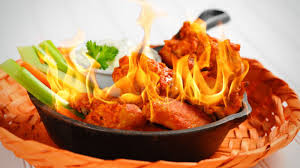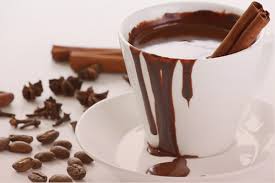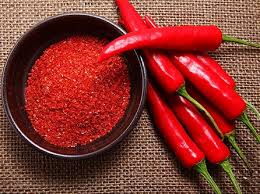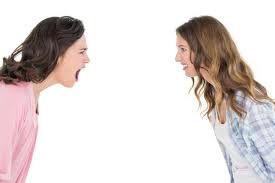Facial flushing could indicate a number of problems such as food allergy and food intolerances. You usually need further evaluation if you are a bit concerned about facial flushing. The only way to resolve the issue is to identify the underlying cause first. Your doctor usually asks about any other symptoms you may be experiencing to make a correct diagnosis.

What Causes Flushing After Eating?
Drinking hot liquids or eating hot foods can both fill your belly with warmth, and can also lead to facial flushing. Your skin turns red because of the dilation of blood vessels near the surface of your skin. You may also experience a sensation of heat followed by sweating. This usually depends heavily on what you have eaten, but social anxiety and certain medications can also be the culprits.
1. Food Triggers

You are likely to deal with facial flushing after eating anything that contains ginger, hot peppers, curry powder, and large quantities of onions and garlic. Being on a high carb diet may also be the reason why you experience flushing. These foods require more energy during digestion, which causes a spike in blood sugar levels. A change in blood sugar directly affects your blood vessels and leaves you with a red face. Some of the foods to avoid in this case are pasta, sugary treats, and breads made of refined white flour.
2. Drink Triggers

Caffeinated hot drinks, such as tea, coffee, and cocoa can dilate your blood vessels. Similarly, herbal teas or even energy drinks may contain kava that can lead to flushing. You may have to deal with a facial flare up after drinking large amounts of sugary caffeinated beverages. Drinking hot fluids may also serve as a trigger, so it is better to let them cool down a bit before drinking. Your red face may also be the result of drinking fermented alcoholic beverages, such as wine, beer, and sherry – that is mainly because these beverages contain the histamines and tyramines.
3. Food Allergies
.jpg)
Some people develop facial flushing after eating foods that contain a sugar substitute, aspartame. Many other food additives can also lead to an allergic reaction and cause facial flushing. You may also develop an allergic reaction after eating anything that contains the flavor enhancer monosodium glutamate (MSG) or the preservatives sulfites and sodium nitrate. Sulfites are produced during wine fermentation process but some foods are natural sources of these preservatives. They are usually present in frozen shrimp, preserved meats, fried foods, desserts, and bottled salad dressings. Check the label before buying these food products.
4. Spicy Foods

Foods that contain chili pepper can cause flushing. That is mainly because peppers usually contain a compound called capsaicin, which is responsible for producing a burning sensation in the mouth. Your brain may react to that feeling by releasing endorphins, which can cause dizziness and flushing.
5. Emotional Triggers

Facial flushing may as well be the outcome of being anxious about anything. Extreme emotions can leave you with a red face. You may notice your neck appear splotchy when you feel embarrassed or anxious. The same may also happen when you are stressed, angry, or sad. Red blotches may appear on your face while crying. Your blood pressure also increases due to extreme emotions, but facial flushing is not directly associated with facial flushing.
What Can Be Done?
Pay attention to your diet to resolve the issue of facial flushing after eating. You should be drinking decaf varieties of teas to reduce facial redness. Switching to 'white' alcohol such as gin and vodka may also help, especially when used with a sugar-free mixer or water. Just keep in mind that all forms of alcohol may contribute to facial redness.
You should also avoid eating food when it is extremely hot. Let it cool down first. Avoid highly spicy foods and include cooling foods in your diet, such as spinach, blackberries, melons, cherries, and blueberries. The use of cooling herbs, such as tarragon, lemongrass, mint, thyme, and rosemary may also help in this regard.
When to Visit Your Doctor
While facial flushing is not a medical emergency, it sometimes indicates a serious underlying condition. It is a good idea to see your doctor to identify the underlying cause of your facial flushing, especially if the problem persists and you have other symptoms as well, such as diarrhea.
Your doctor will ask about additional symptoms you may be experiencing. They may also ask about the duration, frequency, and location of your symptoms. They may also consider your medical history to make a correct diagnosis. Make sure to inform your doctor about any additional symptoms, such as shallow breathing, diarrhea, or hives to help them determine the best treatment option. Sometimes, you have to work with a psychotherapist, especially if your facial flushing is because of emotional problems.
How to Prevent Flushing After Eating
While there is no single cure to prevent flushing, you can take some precautionary measures to keep things under control. For instance:
- Avoid or limit your intake of alcohol to prevent facial flushing. Alcohol can cause facial redness when your body does not have the enzyme required to break down alcohol.
- Avoid spicy foods and limit your intake of spices from the Capsicum genus.
- Do not go in direct sunlight and limit exposure to extreme temperatures.
- Do not let your niacin intake go beyond 18mg. People who consume more than 50mg of niacin end up dealing with flushing.
- Learn how to control your emotions. Try meditation, breathing exercises, and relaxation techniques to help reduce stress and anxiety.
